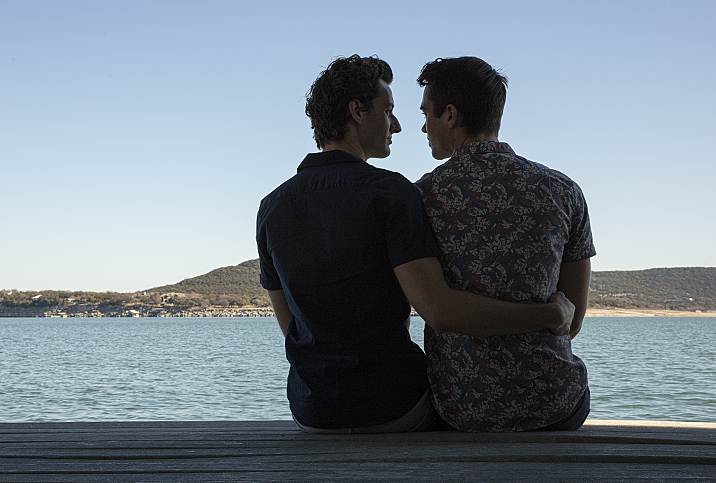What to Do if You May Have Been Exposed to an STI

While any sexual activity with another person can potentially result in STI exposure, some situations may put someone at a greater risk than initially realized. Perhaps a condom breaks or you don’t use one, or you discover a partner wasn’t truthful about their health or honestly had no clue they were at risk of passing something on to you.
Suspecting you may have contracted a sexually transmitted infection (STI) can be scary, especially if you’ve been subjected to sex-negative scare tactics from the media, the educational system and peer groups.
But beating yourself up, panicking or going down a Google rabbit hole of worst-case scenarios isn’t going to make you feel better. Getting proactive and taking action, on the other hand, just might.
Here are some immediate next steps you should take after possible exposure to someone with an STI:
Breathe
As a chronic worrier myself, I know how easy it can be to head into a downward spiral once you start feeling anxious.
In these situations, it can help to take a step back and perform a distracting or soothing activity. The activity is up to you: breathing exercises, meditation, listening to music, calling a friend, drinking a cup of tea or going for a walk. Not only will this provide immediate relief, it will also give you a new perspective, allowing you to view everything in a more objective light.
Please take note: This isn’t the end of the world.
And if you notice any feelings of guilt or self-judgment, try to let them pass without indulging them. After all, this doesn’t mean you’re irresponsible or a bad person, does it?
“Even when the stars align and all things happen exactly as planned, you can still contract an STI, and people often do,” said Jenelle Marie Pierce, executive director of TheSTIProject.com. “STIs are common.”
Visit the doctor
It may be obvious to point out that going to your doctor’s office or a sexual health clinic will allow you to get diagnosed and treated if you do have an STI. But did you also know that visiting the doctor quickly after a potential exposure can actually lower your chances of contracting an STI?
“There are some prescriptions you can be given to help reduce your risk of contracting certain infections, but they only work if you take them within three days of being exposed,” Pierce said. “Post-exposure prophylaxis (PEP) is often administered for potential exposure to HIV and other STIs. HIV PEP is a combination of antivirals, and the exact dose and drug combination differ by manufacturer. HIV PEP is considered highly effective.”
PEP is available for more than just HIV, though
“STI PEP consists of antibiotics and/or antiprotozoals—the specific prescription varies by risk assessment and provider—administered to help reduce the likelihood of contracting a bacterial or parasitic infection, like syphilis, chlamydia or trichomoniasis,” Pierce said. “They are considered relatively effective but are used on a case-by-case basis, and there are fewer studies available that speak to their individual efficacy.”
Your healthcare provider may also recommend vaccination at that time against HBV (hepatitis B virus) or HPV (human papillomavirus) if you haven’t yet been vaccinated. In addition, if there’s a chance that you or your partner could become pregnant, you might want to discuss emergency contraception options such as the morning-after pill.
No insurance? No ready cash? No worries. Many clinics will offer STI testing at low or no cost to people who need it. Just check ahead of time to see if there’ll be a cost before deciding on a clinic to visit.
Book a follow-up appointment
While it’s important to see a healthcare provider within three days of possible exposure to an STI, a negative test result within that time frame doesn’t guarantee you don’t have one.
“You will also want to return to get tested about three weeks later, because a new infection will not show up on a test right away, and getting tested too early can lead to false negatives,” Pierce explained.
Medical professionals may recommend additional testing after that point. When it comes to HIV, “one recommended strategy is to get tested two to four weeks, three months and six months after a risky exposure,” according to the U.S. Department of Veteran Affairs. “Using a sensitive antigen/antibody HIV test, of those who are infected, most will test positive at one month; almost all will test positive at three months; and the rest will test positive at six months.”
If you continue to test negative after all of that, it will truly be time to allow yourself to relax. But even if you end up testing positive, you’re making the right choice by seeking care as soon as possible. The earlier you get diagnosed and treated, the quicker you can manage your condition.
Don’t buy into the stigma
Despite what you may have seen on TV or been told in health class, the fear of an STI is often worse than the condition itself—especially when it’s diagnosed and treated early—so don’t let a positive test result dictate your life.
“An STI is not the worst-case scenario. Most sexually active people contract an STI at some point in their lives, and although it’s not ideal, it’s common. It’s not the end of a healthy sex life,” Pierce said. “Seek resources and don’t be afraid to advocate for yourself and your needs in all relationships, whether or not you have an STI, because your body, your needs and your health matter.”

















